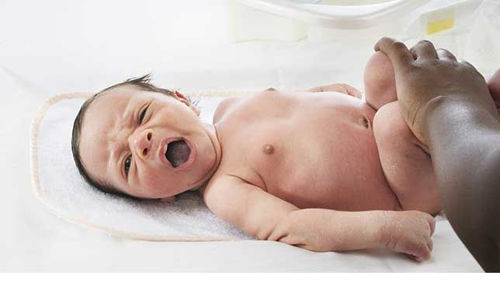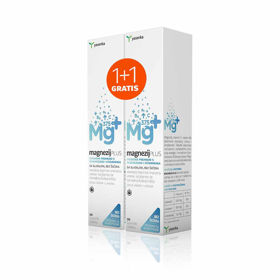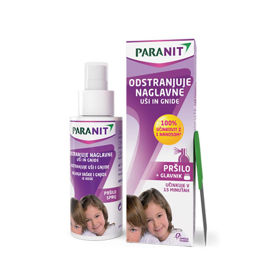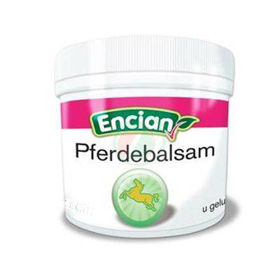Acne is a dermatological disease that is unfortunately long-lasting and persistent, and treatment requires a lot of experience, knowledge, patience and perseverance. Because acne is a fairly common disease, many people still misunderstand it and underestimate it. Many consider them a "normal" teenage problem and often equate them with discomfort, sometimes even "impurity" of the skin. As a result, they do not seek dermatological help or do so after years of unsuccessful testing of various products, the use of which is advised by advertisements or acquaintances.

We know different types and types of acne, but when we talk about acne, we usually mean acne vulgaris or common acne (teenage acne, common pimples).
How common are acne and how long do they last?
During puberty, acne in a more or less pronounced form occurs in almost every teenager. In some only an occasional pimple here and there, while in others the incidence of the disease can be very severe. On average, acne lasts from 6 to 9 years, and can often last up to 40 or even 50 years. We also have people who did not have acne (or only a very mild form) at puberty, but develop it later in life, especially in women, acne can appear after the age of 25 or even 30.
So acne is not only a problem of adolescents but can also be a problem of the adult population.
Why does acne occur?
Acne is a disease of the sebaceous glands and hair follicles. Only they are not significantly active in childhood. However, under the influence of androgenic (male sex) hormones, which are also produced in small quantities by the female body and begin to be excreted during puberty, they begin to change. Sebaceous glands increase and begin to secrete sebum. The hair follicles become larger, stronger, and begin to build different hair.
In order for acne to develop, several factors need to work together. To name a few:
1. Disorder in the horning of the hair follicle and sebaceous glands, which results in the closure of the sebaceous glands and the follicle infundibula (many laymen call this "skin pores").
2. Excessive secretion of sebaceous glands (seborrhea).
3. Presence and multiplication of intrafollicular microorganisms, especially Propionibacterium acnes.
4. Individual immune and inflammatory response.
All of these factors are individual and hereditary. We observe that there is a familial predisposition to acne (e.g., if both or one of the parents had acne, there is a high probability that at least one of the children will also have it).
Acne develops in several stages. Primary, secondary and tertiary changes are described.
In the first stage, comedones or blackheads form. Due to the disturbance of horning, the hair follicle closes, due to the greater activity of the sebaceous glands, sebum accumulates, due to the greater presence of sebum, bacteria begin to multiply and a small cyst is formed. They are called comedones acne, comedones acne.
The second stage occurs when the eczema becomes inflamed and redness and a red bump appear. It is a papule, a type of acne and acne papulosis. When the inflammation is stronger, pus begins to accumulate on top of the papules, and yellow bubbles appear above it. These are papulopustulose acne. With a ruptured inflamed follicle or comedones, a deep inflammation that looks like a nodule occurs. This is a nodule, secularly called "subcutaneous pimple" by patients. Sometimes abscesses form in the skin due to severe inflammation. This worst form of acne, which is very painful when squeezed, is called nodulocystic acne or acne conglobata.
The third stage occurs when the acne process calms down and leaves changes on the skin. If the tissue has been destroyed, it heals, but with a scar. Sometimes cysts, fistulas, sinuses remain. When acne is more severe, they leave strong and deep scars on the skin.
The role of nutrition
Food does not cause acne, but studies in recent years have shown that certain types of food affect the development or. primarily on disease exacerbation. These are especially foods that contain a lot of simple carbohydrates (sweets), and some studies show that acne is also affected by a diet rich in milk and dairy products, especially skimmed, low-fat milk. A healthy and balanced diet and exercise can have a beneficial effect on acne, but of course acne does not cure and does not apply to all patients.
Acne treatment options
Before you begin
Acne is a hereditary and multifactorial disease, so it is necessary to explain some facts to the patient before treatment:
1. There is no cure for acne that will cure it permanently and forever, but we have effective modern medications and dermatological procedures that can be used to control and reduce acne to such an extent that it is practically no longer disturbing or visible. The treatment is not unique
a visit to a dermatologist and prescription of medications, but long-term monitoring and management of the patient (usually controls every 3 to 4 months) and individual adjustment of therapy according to acne severity, acne type, gender, time of year, age and individual preferences.
2. There is no cure for all the factors that cause acne, so there is no monotherapy, but treatment with different complementary medicines, methods and cosmetics with different grips is always combined.
3. When treating acne, it is necessary to be patient and persistent, as the first successes can appear only after three or six months of regular use of medications.
Acne care and treatment
The four basic approaches are:
1. Care
2. Topical therapy
3. Systemic therapy
4. Dermatological procedures
We usually combine these methods, but we often use all four.
1. Care
When caring for acne-prone skin, two guidelines should be considered:
• Nothing "greasy" on the skin. Cosmetics, make-up, oils, etc., which contain a lot of fat, make acne worse.
• No skin manipulations. Acne is a disease that is mechanically sensitive, that is, no scratching, squeezing "pimples", no mechanical impact on the skin (eg rubbing when removing powders and other makeup, aggressive washing).
2. Topical therapy
The advantage of using topical medications (in the form of creams, gels, and liquids) is to avoid the potential side effects of systemic medications. The downside is that the visible effects of treatment are relatively late (several months) and that in severe forms of acne, topical medications are not effective enough.
We have medicines from different groups available. In the first line of treatment we use benzoyl peroxide, topical retinoids (tretinoin, adapalene, tazarotene), azelaic acid, sulfacetamide.
According to recent doctrines, the use of topical antibiotics (clindamycin, erythromycin) is avoided. For specific forms of acne, topical dapsons have been available in recent years. There are more and more combination drugs on the market, especially the combination of retinoids and benzoyl peroxide. The active ingredients, which are written in bold, are available on the Slovenian market.
3. Systemic therapy
It is introduced in more severe forms of acne and in those individuals who are severely affected by acne. In women, especially those who are sexually active and of childbearing potential, and those who wish to use contraception, androgen antagonists are often introduced in combination with estrogens or, in mild forms, only estrogens with a mild intrinsic antiandrogenic effect.
In both sexes, tetracycline antibiotics are still the first-line drugs, but they are prescribed in low doses and for a longer period (4 to 6 months). The second line is some other antibiotics (e.g. azithromycin, roxithromycin). The third line of treatment is the introduction of systemic retinoids (isotretinoin) with regular monitoring of the patient and laboratory parameters, as isotretinoin affects liver function and fat metabolism. Due to its teratogenic effect, this therapy is especially suitable for men, and in women of childbearing age it should be prescribed only in special cases or indications, of course with the prior exclusion of pregnancy and the introduction of reliable contraception.
4. Dermatological procedures
In recent years, complementary or supportive therapy has proven to be the effective use of certain types of medical lasers and some other light sources, which are never used as monotherapy, but only in combination with other treatments.
In some patients, supportive therapy using dermatological highly concentrated acid peels (usually 70% glycolic acid, 30% salicylic acid) is also very successful. Due to misleading advertisements and improper use and inadequate lasers as well as peels, especially in beauty salons, many patients have a bad experience and are distrustful of this type of treatment.
The place and use of cosmetics in the treatment of acne
There are a huge number of over-the-counter products on the market that promise patients to "eliminate" or even cure acne. It should be borne in mind that with cosmetics alone in most cases we will not successfully eliminate acne. Many times, however, patients are confused when a variety of products are flooded.
The answer to the first question is the most difficult. We always advise the use of products from proven manufacturers of medical cosmetics, which can usually only be purchased in pharmacies. We always advise cosmetics that we know, we know its composition and potential action and benefit in acne.
When and how to use cosmetics for acne?
The place of cosmetics in acne is indicated in three cases.
1. In mild, initial and transient forms of acne (especially acne comedones), regular and long enough use of certain cosmetics can be effective in reducing the appearance of acne. It is important to use it regularly and combine several approaches at the same time (eg morning and evening cleansing with cleansers and then applying a cosmetic cream with known active ingredients and known mechanism of action).
2. As a supportive therapy in dermatological treatment. Most often for cleansing the skin before applying medications and especially as a care cosmetic to alleviate and reduce the side effects of dermatological medications (e.g. xerosis and dermatitis when using retinoids).
3. As maintenance therapy after dermatological treatment. The strategy of acne treatment is not to interrupt the therapy, but to introduce more intensive treatment in the beginning, when a satisfactory improvement is achieved, the use of medications is reduced. Many patients achieve improvement to the extent that after a certain period of time they no longer need dermatological medications or can use them only once or twice a week to control the disease. However, the condition can be maintained only with the correct and regular use of selected cosmetic preparations. However, some cosmetic preparations can be used regularly in all stages of acne treatment. It is thought to use corrective cosmetics (eg powders) and UV protection in acne-friendly forms.













